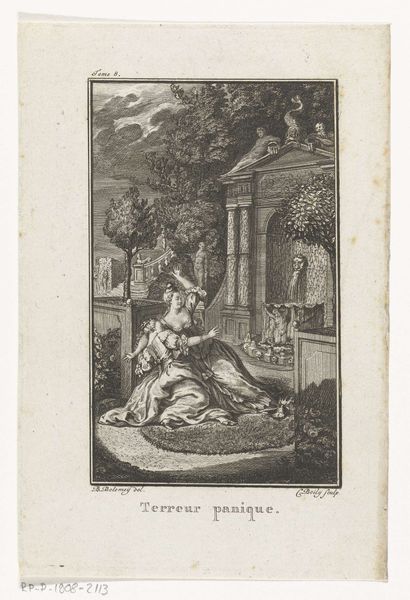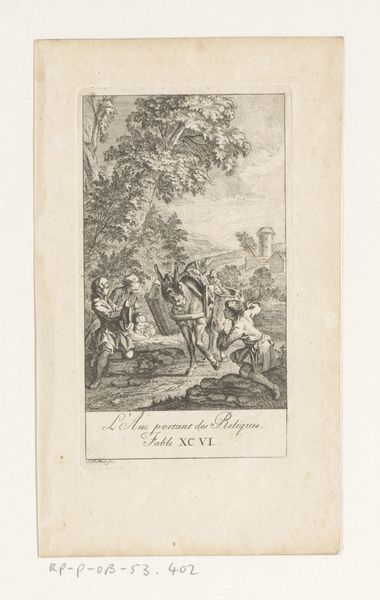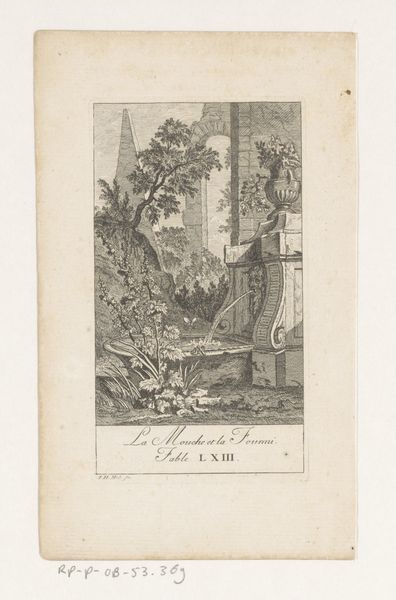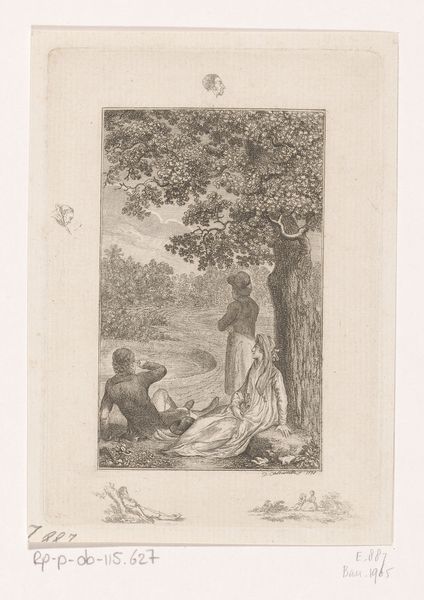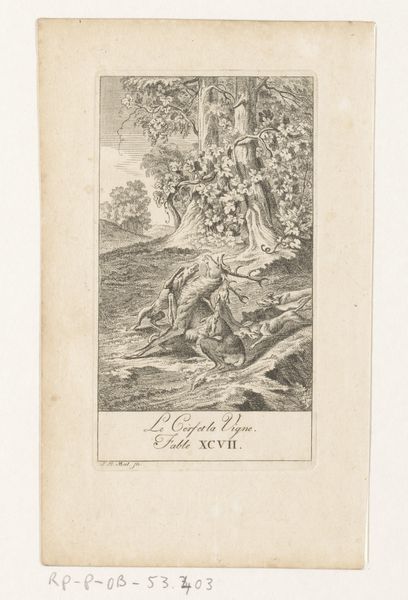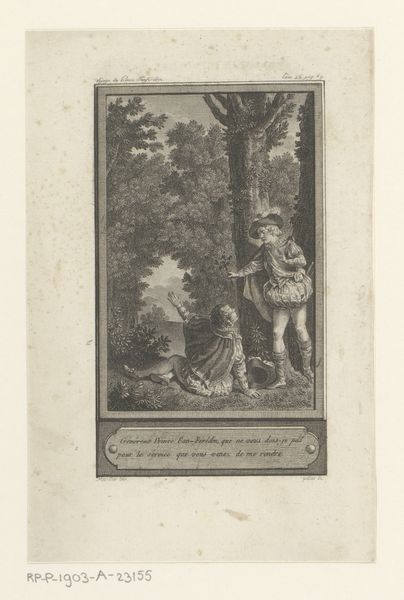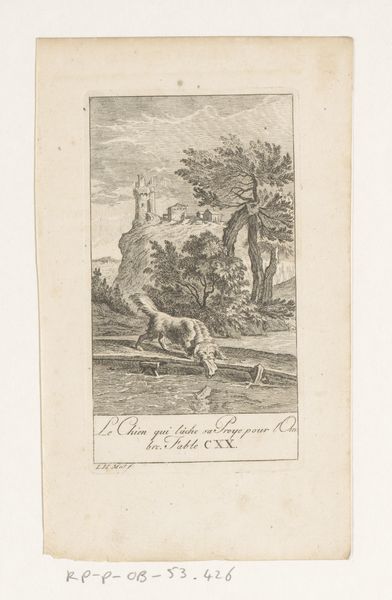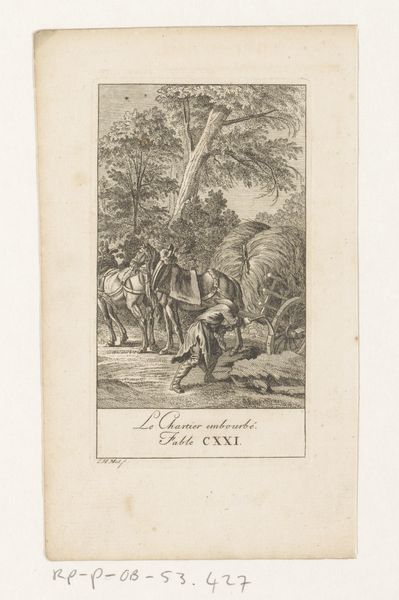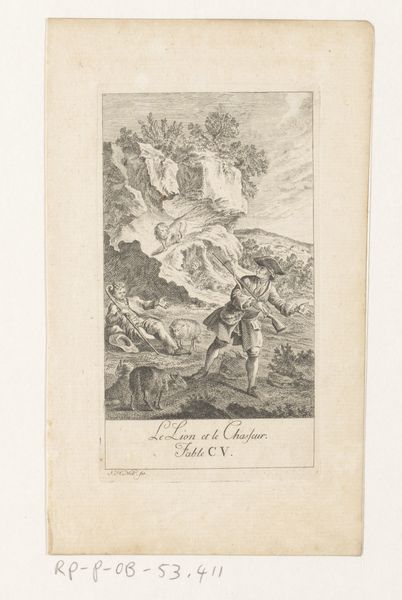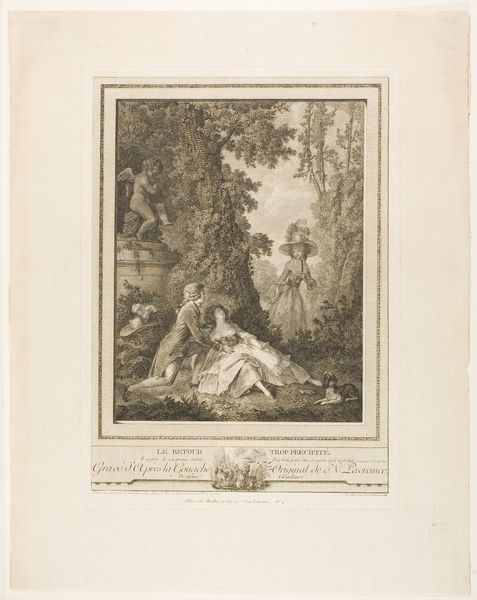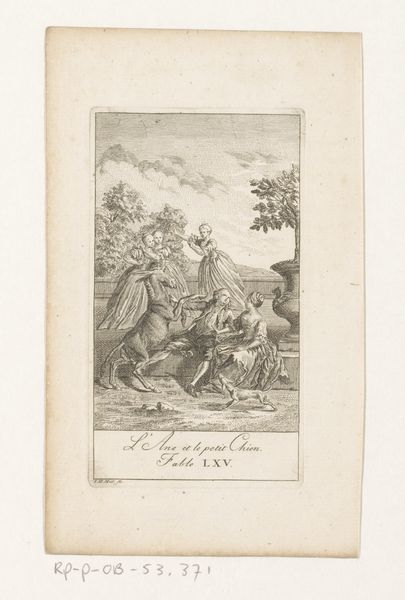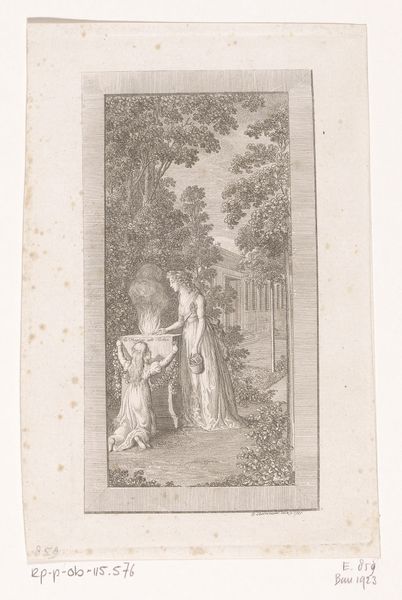
engraving
#
baroque
#
genre-painting
#
engraving
Dimensions: height 142 mm, width 81 mm
Copyright: Rijks Museum: Open Domain
Curator: At first glance, there’s an almost theatrical quality here—a sense of performance and artifice underscored by the formal garden setting. Editor: Exactly. We're looking at Johann Heinrich Meil’s 1758 engraving, “Fable of the Fox and the Bust”. Note the baroque stylistic influences typical of its time. Think about how engravings disseminated imagery and reinforced certain social mores. The fox's presence immediately injects the natural world into an otherwise ordered landscape. Curator: And this tension is so powerful. The crisp lines create a stark contrast between the sculpted bust, the wild foliage that both adorns and obscures the structure behind it, and, of course, the fox. One wonders about power structures – who dictates these ordered spaces? Is nature subversive? Editor: Considering the historical reception of fables, and the context within which this image was circulated, it's impossible not to see it through a lens of class commentary. Genre painting like this frequently commented, even if obliquely, on social roles. This could act as a vehicle for implicit or explicit satire. Curator: Absolutely, what is the fable really communicating? Does the fox represent the cunning lower classes, perhaps? Its direct gaze feels almost confrontational. The garden is suggestive of wealth, leisure, privilege, even if dilapidated. The statue feels so antiquated that this place is clearly in decay. Editor: The medium itself plays a role. Engravings were accessible and reproducible, democratizing visual culture. A fable in visual form makes moral lessons digestible for a wider audience. How did the burgeoning middle class in Europe understand pieces like this and apply it to their worlds? Curator: The scale adds another dimension. This is likely a small print, inviting intimacy. Is it to be viewed publicly or is this something a single person reflects upon privately? The artist wants us to grapple with issues of hubris, class struggle, or the futility of intellectualism. Or maybe it is a reminder that societal appearances and aspirations are hollow? Editor: Considering how artists engaged with social and political issues during this period, especially using allegories and metaphors, the artwork urges us to critically examine not only its immediate narrative but the historical landscape shaping its creation and reception. Curator: Thank you, this has changed my interpretation completely. It felt theatrical, but that sense of performance, of posing, can be read much deeper, now, politically, too. Editor: And seeing it as a component within a broader system of disseminating political messages and constructing identities is critical. Thanks to you, the socio-political context emerges more clearly now, enriching our encounter with it.
Comments
No comments
Be the first to comment and join the conversation on the ultimate creative platform.

